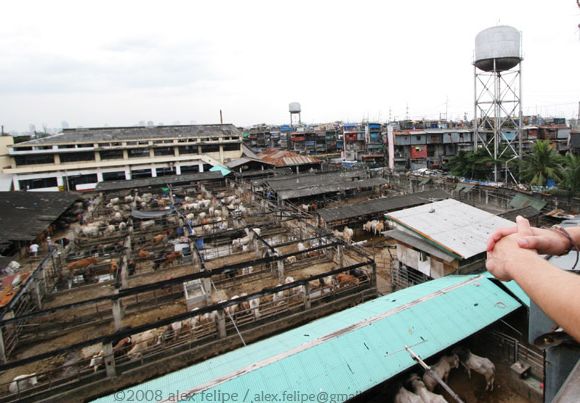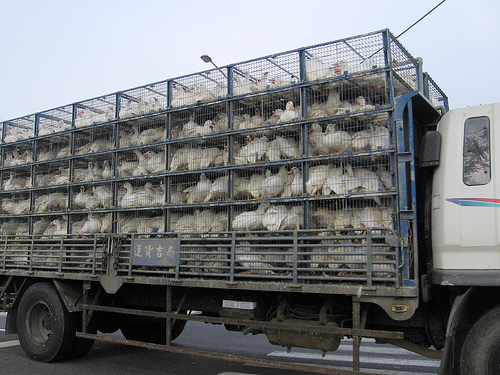|
The Transformation
of Animals Into Food
Many people believe that
animals raised for food must be treated well because sick or dead animals would be of no use to agribusiness. This is not
true.

Industrialized Cruelty:
Factory Farming
The competition
to produce inexpensive meat, eggs, and dairy products has led animal agribusiness to treat animals as objects and commodities.
The worldwide trend is to replace small fmaily farms with “factory farms” – large warehouses where animals
are confined in crowded cages or pens or restrictive stalls
Bernard
Rollin, PhD, explains that it is “more economically efficient to put a greater number of birds inot each cage, accepting
lower productivity per cage…individual animals may ‘produce,’ for example gain weight, in part because they
are immobile, yet suffer because of the inability to move…. Chickens are cheap, cages are expensive.”
In a November 1993 article in favor of reducing
space from 8 to 6 feet per pig, industry journal National Hog Farmer advised, “Crowding
pigs pays.”
Birds
Pigs
Dairy Cows
Fish
Transport
Crammed together, animals must stand in their
excrement while exposed to extremem temperatures in open trucks, sometimes freezing to the trailer. Approximately 200,000
pigs arrive dead at U.S. slaughter plants each year; many of these deaths are caused by a lack of ventilation on trucks in
hot weather.
Workers shock the animals with electric prods,
which increases the incidence of “downers” – animals too sick or injured to stand. Downers are hauled from
the trucks with skid loaders and forklifts.

If Slaughterhouses
Has Glass Walls
If they survive the farms
and transport, the animals – whether factory-farmed or free-range – are slaughtered.
The federal law requires
that mammals be stunned prior to slaughter (exempting kosher and halal). Common methods:
Captive bolt
stunning – A “pistol” is set against the animal’s head and a metal rod is thrust into the
brain. Shooting a struggling animal is difficuwrlt, and the rod often misses is mark.
Electrical
stunning – current produces a grand mal seizure; then the throat is cut. According to industry consultant Temple
Grandin, PhD, “Insufficient amperage can cause an animal to be paralyzed without losing sensibility.”
|
